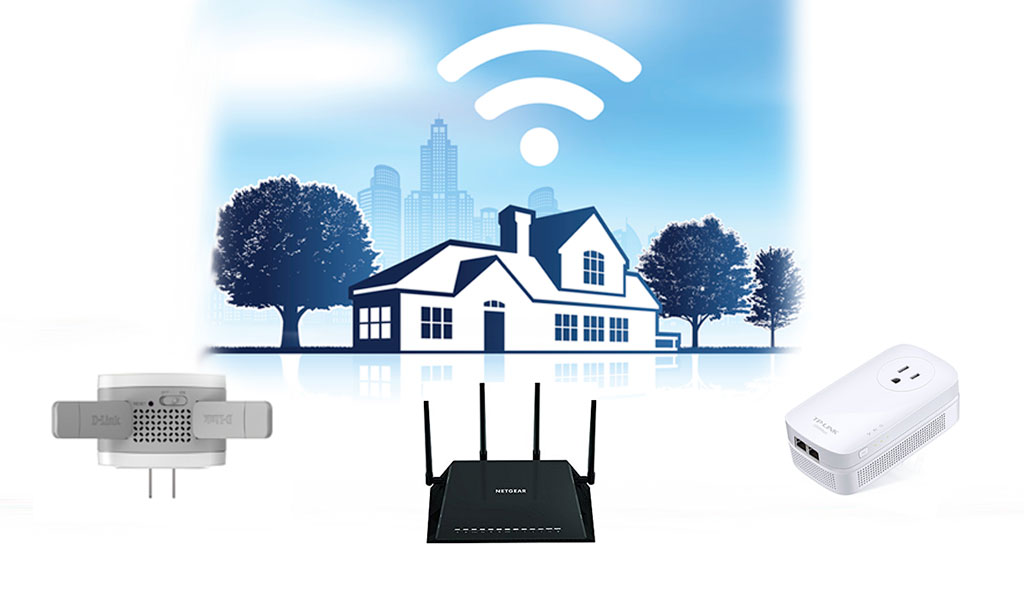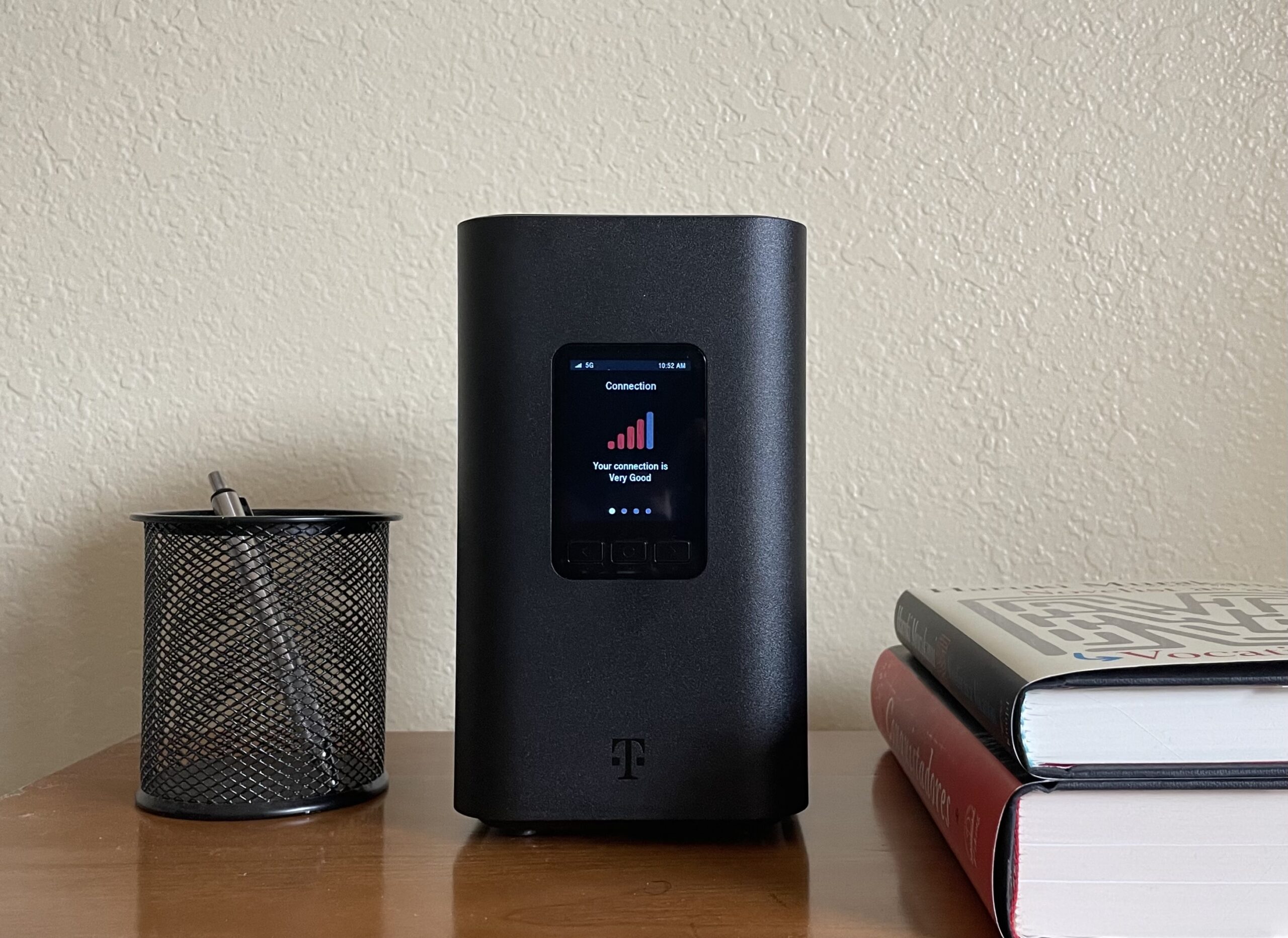Why Is My Hotspot So Slow?
Expert tips to speed up your hotspot and improve connectivity
Dec 17, 2025 | Share
Technology
The best ways to improve your hotspot speeds are to restart your hotspot device, plug it into electrical power, and move it to an area that may get better cell reception. If that doesn’t work, you can try switching to the 5 GHz band. Then, adjust your connected devices. Move as close to the hotspot as possible, close unused apps, stop any background downloads, or tether to your hotspot device using a USB cable.
We’ll go over hotspot speed tips that can work whether you’re using a standalone hotspot device or your smartphone’s personal hotspot mode. But if nothing helps, it might be time to switch mobile phone or hotspot data providers.
Hotspot too slow?
Enter your zip code to find a better mobile phone service.
Top ways to speed up your hotspot
We go into more detail for each fix further down the page. Select a fix for more info.
- Toggle airplane mode on and off
This simple step will act as a soft reset for your connection. - Restart your phone and devices
Sometimes all you need is a fresh start. - Move your hotspot device
Because hotspots receive internet signal from cell towers, strong cell reception is the foundation of a zippy connection. - Switch to the 5GHz frequency band
Hotspots broadcast internet signal to your devices using Wi-Fi frequency bands. Choosing the right frequency band can have a big effect on your speeds. - Plug in your hotspot device
Plug your phone into an electric source so it functions at full power. If you can’t, turn off battery saving mode. - Move your connected device
Stay close to your hotspot and remove any obstructions for the best connection over Wi-Fi. - Close unused apps and disable background downloads
You don’t want to use your hotspot for anything other than the task at hand. - Update everything
Tech is always changing. Make sure you have the latest updates to keep things running smoothly.
Toggle airplane mode on and off
This one’s as easy as it sounds if you’re using your smartphone as a hotspot. If your hotspot connection is slow or broken, turn off airplane mode on your device and then turn it back on.
If you’re using a hotspot device, this won’t work (because hotspot devices never work in airplanes, at least as far as we know).
Restart everything
Our phones and devices do a lot of auto-switching between different networks, and sometimes figurative wires get crossed in the process. When you restart your hotspot and devices, you get a clean slate. There’s a good chance that will fix the problem altogether.
Move your hotspot device
Hotspots receive their internet signal from cell towers, so you want your hotspot to get the best possible reception. If possible, you want a 5G or 4G LTE signal and at least three bars.
If your hotspot is a smartphone, the bars will be at the top of the screen. If you’re using a hotspot device, you can check your reception on the device’s screen or on its interface (which may be in an app).
Here are a few simple ways to improve your hotspot’s reception:
- Keep your hotspot elevated. Go to the highest floor in your building or go uphill if you’re outside. Placing the hotspot near a window may also help.
- Keep your hotspot out and uncovered. You want as few obstructions as possible between your hotspot and the nearest cell tower.
Switch your hotspot to the 5 GHz Wi-Fi frequency band
Your hotspot broadcasts Wi-Fi on two different frequency bands: the 2.4 GHz frequency band and the 5 GHz frequency band. The 5 GHz band is much faster, so try switching to it in your hotspot settings when your speeds need a little pick-me-up. The one downside to the 5 GHz band is its decreased range compared to the 2.4 GHz band, but this shouldn’t cause any problems as long as you stay near your hotspot.
Note: one caveat to using the 5 GHz band is that older devices may not be compatible with 5 GHz Wi-Fi. If you’re using an old laptop or another aged device, ensure it can use 5 GHz Wi-Fi before switching the frequency band.
Switch to 5 GHz on iPhone
Step 1: Open Settings and tap personal hotspot.
Step 2: Toggle off Maximize compatibility.
Switch to 5 GHz on Android
Step 1: Open Settings and tap Hotspot & tethering.
Step 2: Tap Wi-Fi hotspot.
Step 3: Tap Hotspot settings.
Step 4: Tap AP band and select 5 GHz only or Prefer 5 GHz.
Plug in your hotspot device (or turn off battery saving mode)
When you’re using your phone as a hotspot, you want full power. Plug your phone or device into an electrical charger, if possible. If not, disable low power mode.
Turn off low power mode on iPhone
Step 1: Open Settings and tap Battery.
Step 2: Toggle off low power mode.
Turn off low power mode on Android phones
Step 1: Open Settings, then scroll down and tap Battery.
Step 2: Toggle off Power saving mode.
Move your connected device
Mobile hotspots broadcast a Wi-Fi signal just like your home router, but the signal is weak. Keep your connected devices within about five feet. This is even more important when using the 5 GHz Wi-Fi frequency band.
Certain materials can cause issues, too. Stay away from metal, tile, stone, and water, especially if these materials are blocking a direct line of sight between your device and your hotspot (e.g., a tiled bathroom between your hotspot and laptop).
You should also keep your device and hotspot away from certain electronics that can interfere with the Wi-Fi signal. These tend to be wave-emitting or broadcasting devices, such as microwaves, baby monitors, and garage door openers.
If all else fails, skip Wi-Fi and tether your laptop or tablet directly to your hotspot device using a USB cable.
Close unused apps and disable background downloads
When you’re on a hotspot connection, you don’t want to waste any megabits. If things seem slow, turn off any apps you aren’t using and disable background downloads.
You’ll want to do this on your hotspot device (if you’re using a smartphone) and your connected devices.
When you’re back on a stable Wi-Fi connection, remember to reverse these settings so your apps stay updated and everything works as it should.
Update everything
With so much tech in the world today, constant updates are a necessity. If your speeds seem slow, it’s always worth checking for updates on both your hotspot device and connected device.
Note: We get that you can’t update easily when you’re on a hotspot connection, but planning ahead can help. If possible, get all those updates taken care of before you lose a solid Wi-Fi signal from a wired connection.
Make sure you’re not out of data
Depending on your mobile plan, your hotspot may slow down after you’ve used a certain amount of data, even if your plan advertises unlimited data. Sometimes you can get around this by changing your mobile plan, but often, these speed-throttling policies are baked into every plan.
Check out our Best Hotspot Data Plans if you’re considering a change.
FAQ
How do I turn on the Wi-Fi hotspot on my phone?
How do I find the name of my mobile hotspot on iPhone?
How do I find the password for my mobile hotspot on iPhone?
How do I find the name of my mobile hotspot on Android?
How do I find the password for my mobile hotspot on Android?
How do I turn on my mobile hotspot on Android?
How do I turn on my mobile hotspot on iPhone?
Author - Chili Palmer
Chili Palmer covers home tech services, with a special focus on understanding what families need and how they can stay connected on a budget. She handles internet access and affordability, breaking news, mobile services, and consumer trends. Chili’s work as a writer, reporter, and editor has appeared in publications including Telecompetitor, Utah Business, Idaho Business Review, Benton Institute for Broadband & Society, and Switchful.com.






